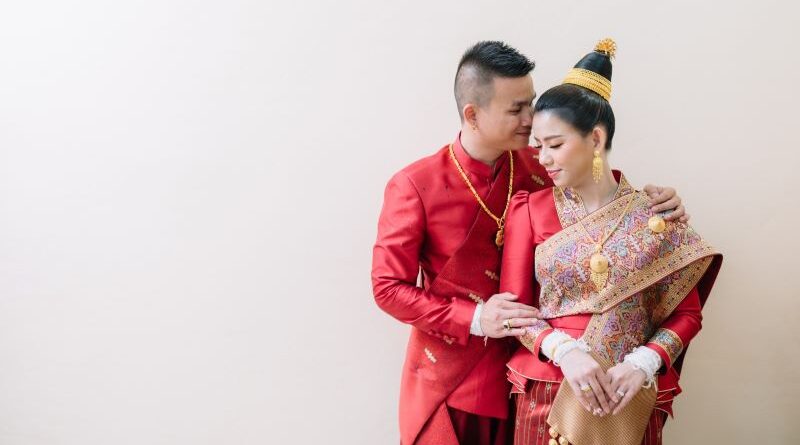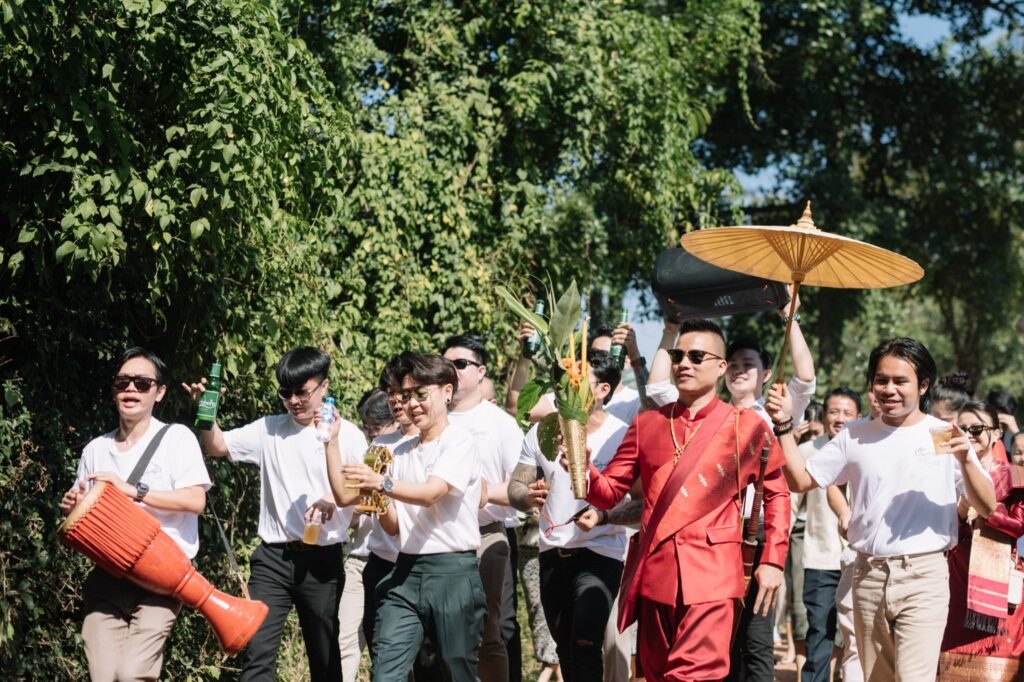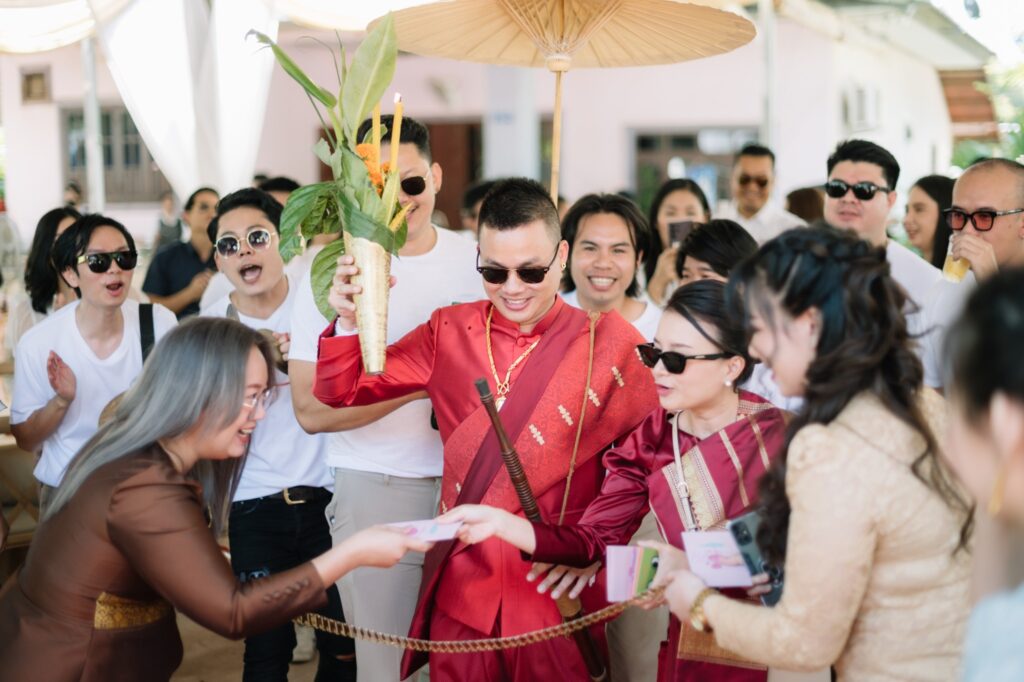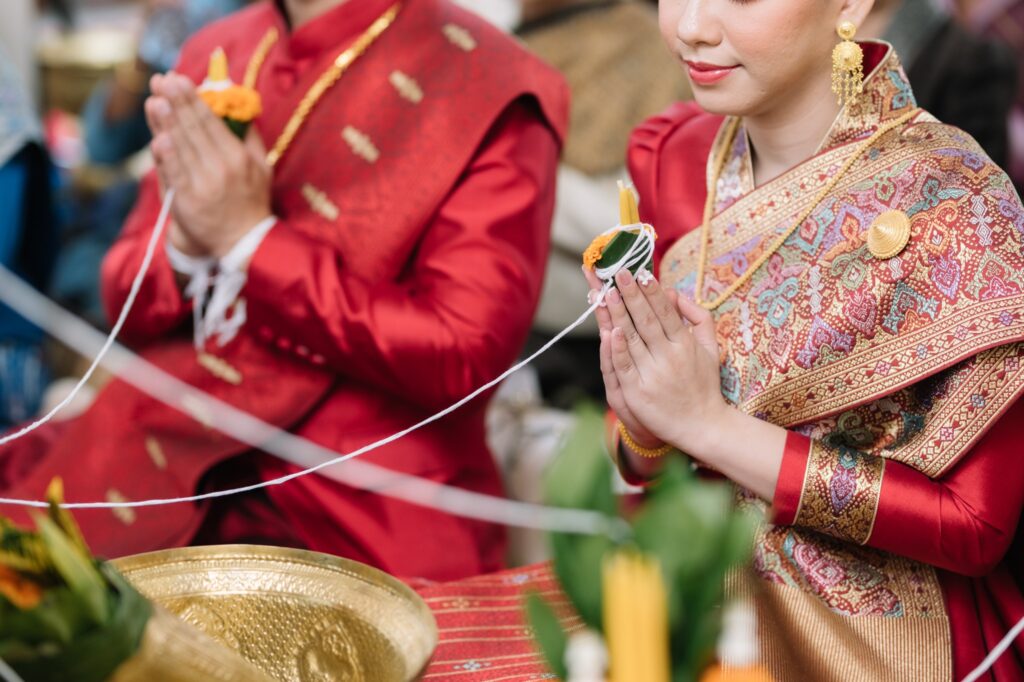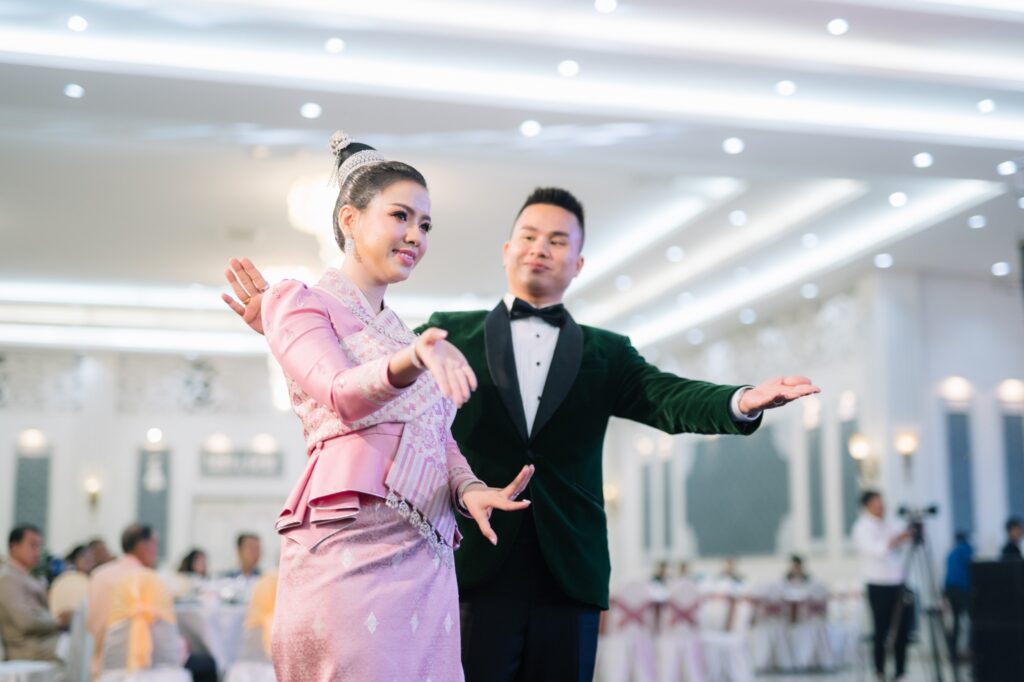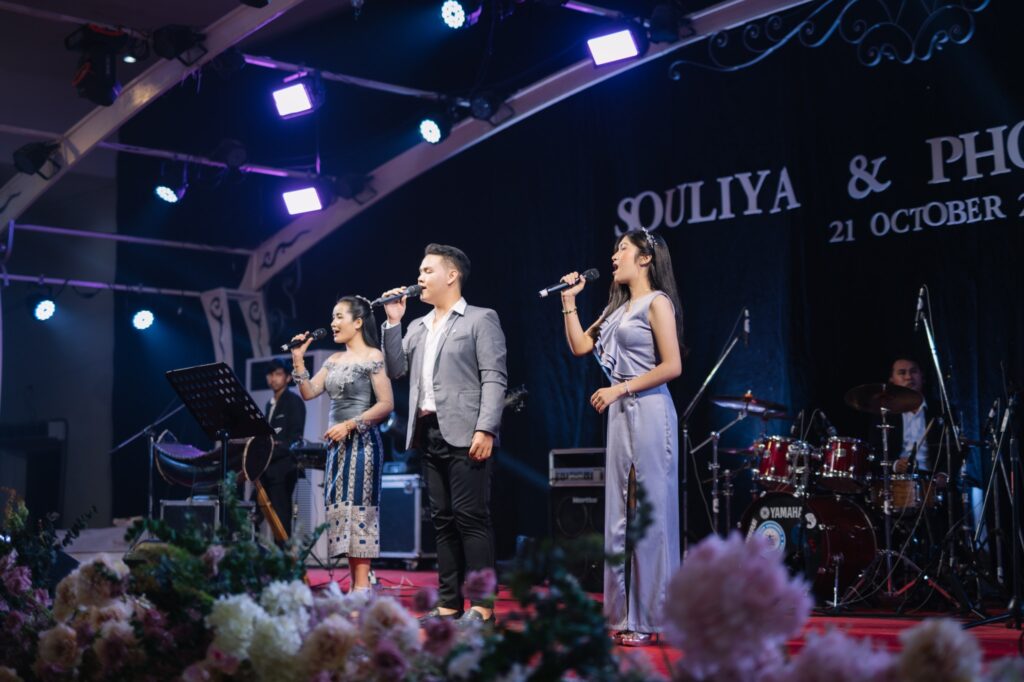Lao Wedding: A Celebration of Tradition and Elegance
Source: Vientiane Times
The traditional Lao wedding ceremony is an elaborate and formal ritual. Custom dictates that all participants must don their best finery and women in particular dress in the most beautiful of costumes in honor of the newlyweds.
In the past, Lao weddings were usually held in the morning as this was the most convenient time for the organizers and guests.
Today, things are changing, meaning people from all walks of life have more flexibility in their lives.
Now it doesn’t matter so much whether the wedding takes place in the morning or evening, because everything is easier to arrange than in the past.

Lao wedding customs dictate that, to start with, the groom has to bring his parents and elder relatives to the house of his intended bride to formally propose the wedding.
Then the process of negotiating the bride price will begin, with the price usually involving the payment of money and gold, and being dependent on the particular needs of the bride’s parents.
Traditionally the payment was requested by the bride’s parents to compensate for the breast milk that was fed to the girl after she was born.
Once both parties agree on the price, the date of the wedding can be set.
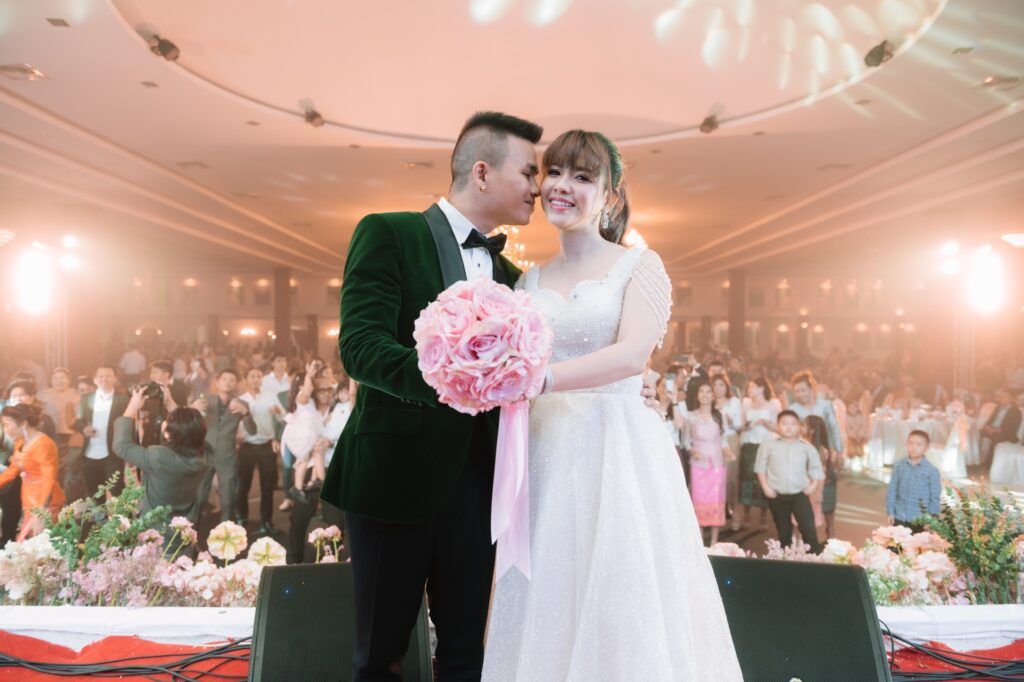
In Laos, weddings cannot take place during the three months of Buddhist Lent each year from mid-July to mid-October.
The date must be set for an auspicious day according to the lunar calendar. The parents of either the bride or groom or both will usually consult elders who have a good knowledge of Lao traditions to determine an appropriate date for the ceremony as they are the ones who know the most propitious days in the lunar calendar.
The night before the wedding day, an informal ceremony will take place at the bride’s home, and sometimes the groom hosts a similar ceremony.
This event is called Oundong, referring to the friendliness engendered by the wedding, with close relatives and friends coming together to eat and drink.
On the morning of the wedding day, the groom’s group walks towards the bride’s house in a procession. They play musical instruments and sing and dance, with everyone laughing, cheering, and having a lot of fun.
Upon arrival at the bride’s house, the groom and his group are met by the bride’s relatives where a silver door and a gold door are set up and closed.
These gold and silver gates are meant to prevent the groom from entering before he is granted permission.
The groom will be allowed to go inside only after he drinks with the bride’s group and answers their customary simple questions, such as Where have you come from? and What have you come here for?
The groom doesn’t have to answer the questions himself because his older relatives will do the talking and answering for him.
When the bride’s family is satisfied, they allow him to enter the house after having his feet washed by the bride’s younger sister or brother, or other relatives. The groom must then hand over a gift of money to that person and can then enter the house.
The groom is met at the door and led by a female relative of the bride to the phakhuan, while the bride is led to the phakhoun from her room by another elder female relative. She is seated on the left side of the groom with both sets of parents and relatives sitting nearby.
On the wedding day, a Baci-soukhuan (good luck) ceremony for the couple takes place in either the bride’s house or the groom’s house.
The centerpiece of every Baci-soukhuan ceremony is the phakhuan, a colourful pyramid-shaped ornamental structure usually handmade by women. In towns, they can be purchased at markets.
The phakhuan is made from banana tree stems studded with orange marigolds, banknotes, and sticks of white thread which will later be used as good luck wrist ties. Next to the phakhuan are placed a boiled chicken, boiled eggs, and glasses of locally-brewed alcohol.
After everyone is settled in, the Baci-Soukhuan ceremony begins, with the master of ceremonies (morphon) reciting blessings and bestowing good wishes and the bride and groom feeding each other an egg.
The morphon is the first to tie the white thread around the wrists of the bride and the groom. Next are the parents, followed by other relatives from both families.
After that other guests take turns to tie white thread on the wrists of the happy couple. Some also roll up a small banknote and attach it to the thread.
The Baci-soukhuan ceremony is an ancient ritual designed to ensure good health, happiness, good luck, and love for the duration of the marriage.
This ceremony is also held on other important occasions such as Lao New Year, the arrival of a new baby, the start of a person’s long journey, or a housewarming ceremony.
After the Baci-soukhuan is over, it’s time for the party to begin when the guests are invited to eat, drink and dance.
A live band with a singer provides the music and the elegantly dressed bride and groom perform the first dance together, always a very graceful affair with careful, measured steps, after which their family members take to the floor for the traditional slow circle dance, called the Lamvong. Then other guests will also start dancing and the merriment increases as the tempo picks up and the Beerlao flows.
In the tradition of the Lao people do not get married during these three months Buddhist lent or Khao Phansa between the middle of July to October. Until the end of Buddhist Lent is the time of marriage is goodwill. The Khao Phansa is the traditional three-month rains retreat during which Buddhist monks are expected to stay in their own temple to study the Buddha’s teaching as well as meditating. They are not allowed to travel and stay overnight out of their temples.

